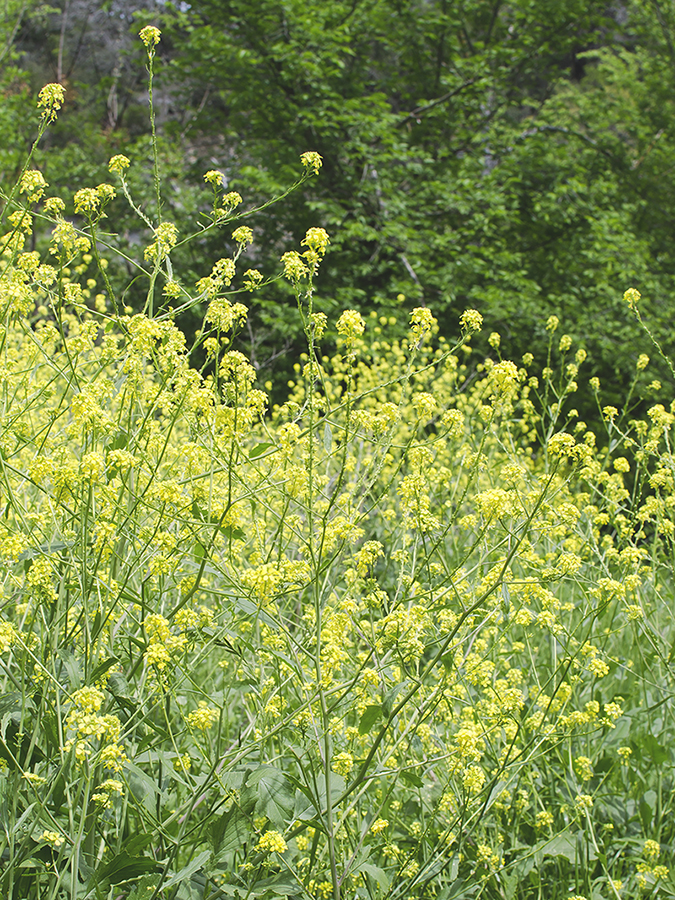
FAMILY
Brassicaceae, with cruciferous vegetables such as broccoli, cabbage, cauliflower, and kale
NATIVE RANGE
The Mediterranean region and other parts of Europe, North Africa, and Asia
INTRODUCED RANGE
North America
Important Environmental Factors

Any level of paved or compacted ground >1%

Igneous and metamorphic substrate types

High seasonal variation in rainfall
Species Ecology
Black mustard is an invasive plant that can reach up to 6 feet tall in a single growing season. In California, it is common in coastal areas at lower elevations. Plants form thick, single-species stands, particularly in disturbed areas, roadsides, fields, and grasslands [1]. Black mustard is a winter annual, which means that it will die each year and regenerate during the next rainy season. Its bright yellow, four-petaled flowers bloom from April to July.
Impact in California
Fast-growing, dense stands of black mustard often out-compete native vegetation. Like other mustard species, it produces many seeds each season, forming a large seedbank. These seeds can survive deep underground for over 50 years [2]. Black mustard is also believed to produce allelopathic substances, which inhibit the growth of other native and non-native plants. It is well-adapted to fire and leaves copious dry fuel behind at the end of each growing season. This can increase fire frequency in chaparral and coastal sage scrub habitats, sometimes converting them to annual grasslands. Its seeds are not killed by fire.
Management
Black mustard is often considered a weed due to the effect it has on native ecosystems. It can be manually removed from invaded sites, and annual removal of plants before seeds mature can reduce the seedbank. However, it can be very difficult to manage. Biological controls are not a viable option in the U.S., as black mustard is closely related to many agricultural crops and continue to be used as a cover crop itself.

Data source:
Species records provided by Calflora and iNaturalist
References:
- Oduor et al. (2011) in New Phytologist 191(2), 536-544.
- DiTomaso et al. (2013) Weed Control in Natural Areas in the Western United States. Weed Research and Information Center, University of California.